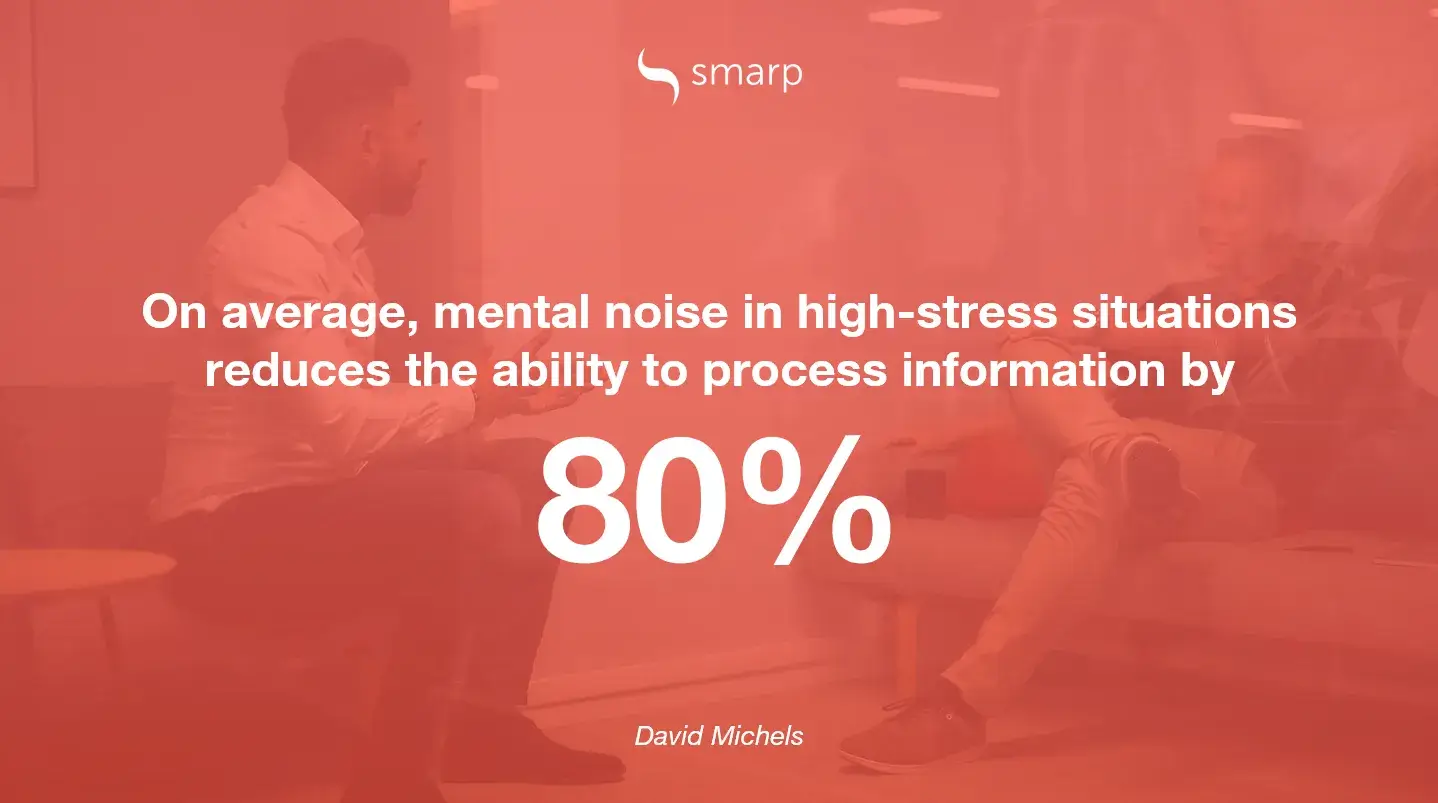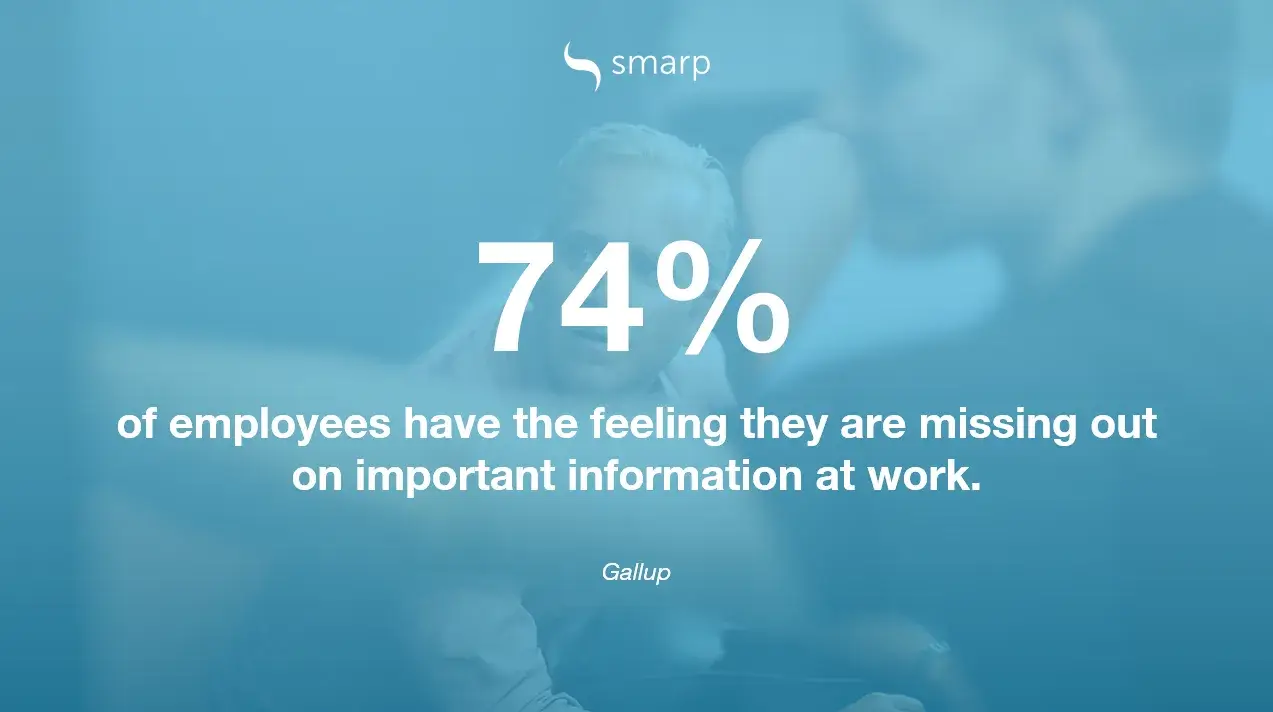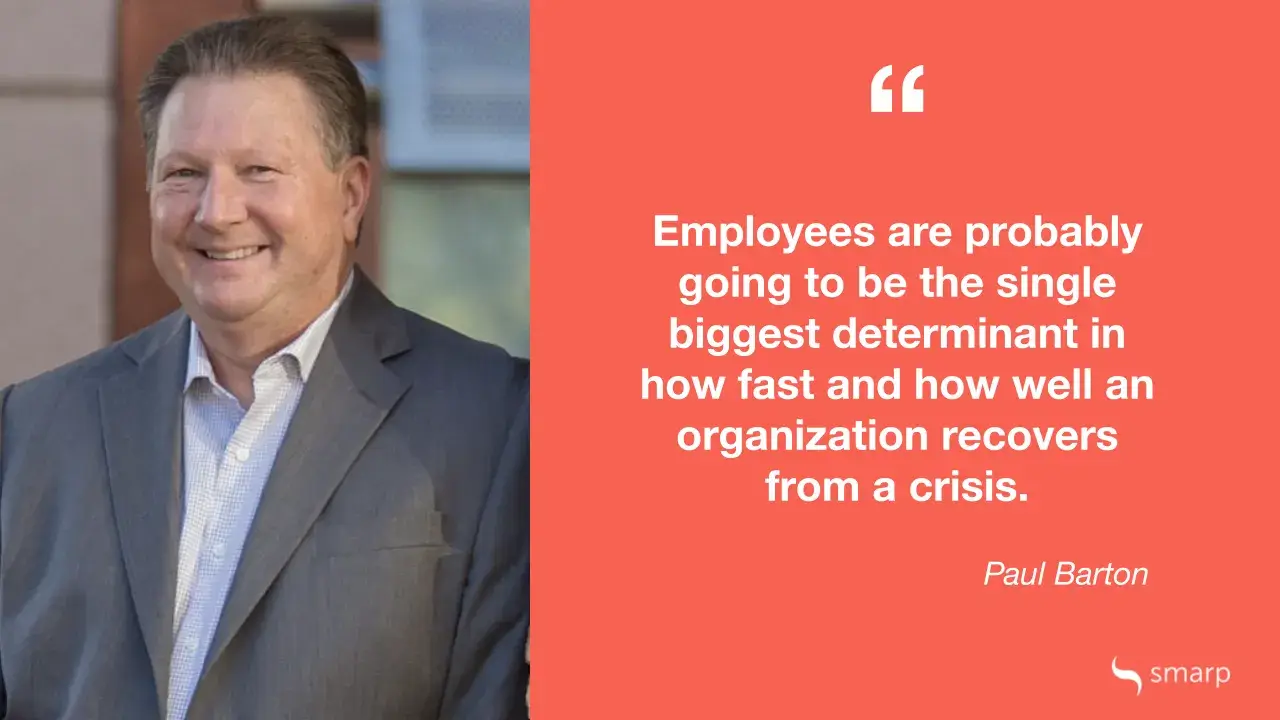Who would ever think that Human Capital Management could have changed so much in such a short period of time? The pandemic has completely restructuring the way organizations manage their human capital.
📚Download our eBook “10 Principles of Modern Employee Communications” and learn how to communicate with the modern employee in today’s digital age.
In this blog, you will learn about the eleven ways COVID-19 has changed the way companies communicate with and support their employees.
11 Ways the Pandemic Has Changed Human Capital Management
Human Capital Management has been redefining in the past few years, and these changes are even more visible during the pandemic that is currently hitting the world.
The way we manage employees and communicate with them has changed significantly during the past few weeks.
Therefore, employers across the world had to adjust to this new situation and were forced to make changes to their HCM initiatives.
Let’s take a look into how Human Capital Management is different now and what are the priorities that employers are focusing on the most.
1. Remote work became the new normal
Shifting to remote work and virtual collaboration is one of the biggest changes employers have embraced to address the increasing complexity of the current public health and economic crisis.
As social distancing has been proved to stop the pandemic from spreading, this new regulation came as a natural thing to do.
Here, it is important to understand that this switch is not a negative thing in the business world. Moreover, 90% of employees say that allowing for more flexible work arrangements and schedules would increase employee morale, while 77% say allowing employees to work remotely may lead to lower operating costs.

However, employers and managers who were not used to managing and communicating with remote employees struggled to keep their teams connected and help their employees stay as productive as possible.
In fact, only 50% of employees believe they would be equally or more productive working from home as opposed to their normal work location. Therefore, remote Human Capital Management is a challenge many employers are facing these days.
The thing is, remote work is here to stay.
🔎Below are some stats on remote work during COVID-19 you might be interested in:
- A survey run in China showed that 63% of respondents were supportive of remote work, with 55% believing that their employer provided them with the software, tools and resources to work effectively (World Economic Forum)
- 35% of people surveyed by WhistleOut said that weak Internet has prevented them from doing their work at some point during the Coronavirus crisis and 43% said they have had to use their phone as a hotspot during the crisis (Forbes)
- 52% of managers say they will allow their employees to work remotely more often as a result of the two-month work from home experience (Gallup)
- A survey run in the UK during the pandemic showed that 73% of the respondents believed they were more efficient when working from home (Statistica)
- 74% of companies plan to permanently shift to more remote work post COVID-19 (Gartner)
2. The shift to online working environments
As technology can significantly ease a company’s Human Capital Management efforts, employers who have digitilized their internal processes earlier have now a big advantage.
The ones that still haven’t are now forced to build new online working environments so they can continue running the business as smoothly as possible.
In other words, digital transformation will happen naturally during these times as this is the only way to really foster online working environments and enable our employees to do their jobs successfully.
As digital working space requires continuous employee communication and collaboration, providing access to online communication tools and collaboration platforms is critical.
This is why we are now seeing companies across the world implementing internal communication and employee collaboration software solutions.
3. Employee communications became the #1 priority
Beyond making clear and decisive technology decisions, it was also critical for leaders and other internal communicators to rethink the way they were managing their people during the pandemic.
A baseline requirement is to consistently communicate change and its impact on the organization with clear, concise and consistent messaging and the infographic below shows the reasons why 👇

Human Capital Management professionals have been saying that we have to make our employees our top priority. Being employee-centric is especially critical during times of crisis – how you manage and treat your employees during times like these indicates how your company is positioned as a corporate citizen.
With the shift towards remote work, work-life boundaries are getting blurred. Therefore, open and frequent communication is key for setting expectations on how groups will collaborate and come together.
Additionally, keeping employees informed about the latest company and local authorities’ updates is more important than ever before. Employers also have to continuously communicate and remind employees about the import COVID-19 safety tips.
4. The new focus on building better employee-manager relationships
Employees never payed more attention to their managers than during times of crisis.
During these times, employees expected from their leaders to offer visibility on the way the crisis was impacting the business and they also expected more empathy and support from them as they were working from home.

In fact, safety guidelines (84%), COVID-19 updates (79%), and new organizational policies and procedures (75%) were the top three topics communicated to employees during the crisis. Diversity, equity, and inclusion efforts were only communicated by 19% of respondents.
Leadership consultant David Michels writes in Forbes that “mental noise in high-stress situations reduces the ability to process information by 80%, on average.”
In other words, people have difficulty hearing, understanding, and recalling information when they’re under stress.

As leadership is an important part of Human Capital Management, managers had to build strong relationships with their employees by communicating clearly, concisely and regularly.
In most cases, this communication included critical information like how to access health benefits, and sometimes it could be a simple touchpoint reminding employees that their well-being is important.
Therefore, it is important to have trusted managers who practice empathy and authenticity when delivering these messages during stressful times.
Now is the time for managers to learn from the crisis we’ve been through so they can build better relationships with their teams and rebuild trust that they may have lost in the past.
5. More visibility on how miscommunication can impact businesses
The economic and labour crisis created by the COVID-19 pandemic could increase global unemployment by almost 25 million, according to a new assessment by the International Labour Organization (ILO).
Most business trips got canceled, some companies have closed their plants, and other businesses — especially in the tourism industry — went bankrupted. Can you imagine how scared your employees have been in the past few months? They were scared about losing their jobs and their future overall.
When it comes to crisis communication, the worst thing you can do is to leave your employees in the dark, no matter how serious the situation is.
During COID-19, your employees might have been communicating with each other and they probably went through some worst case scenarios. That is what people tend to do when they feel scared.
If you want to eliminate this fear and stop the spread of misinformation among your employees in times of a crisis, support the social dialogue in the workplace and engage with your employees in a truthful and honest way.
6. A new approach to crisis management
Human Capital Management as well as Crisis Management have drastically changed. How? Here’s the key to changing the paradigm on crisis management defined by PwC:
Instead of viewing people as your weakest link in a crisis, see them — and the culture you foster — as your single greatest potential strength.
For many specialists and experts, this situation has been seen as a big crisis preparedness test for employers across the world.
Indeed, many businesses had never been in such crisis, and there has never been a global crisis that came so fast. The way organizations have reacted to the crisis had a great impact on how well they are now recovering from it.
Even though things are going “back to normal”, most organizations across the world are still assessing and redefining their crisis management strategies. Indeed, building the right strategy doesn’t come easy, it’s an ongoing process.
💡Check out our COVID-19 Crisis Management checklist where we share tips and tricks to help you increase your business’s resilience.
7. Teamwork and team dynamics are now encouraged more than ever
As remote work is becoming the new normal, now is the time for Human Capital Management professionals to foster collaboration and teamwork in the workplace.
Not only does remote work requires a better collaboration among employees, but it also requires from the multidisciplinary crisis management teams to be as cohesive as possible.
In the midst of the unfolding pandemic, it is crucial for legal, PR, internal communications and other departments to be on the same page regarding whether, when, and how to disclose any pandemic-related issues both internally and externally.
Team dynamics tend to be amplified by crisis, and coordinated actions are extremely important. In addition, connecting people within an organization and encouraging two-way communication is the only way to enable employees to collaborate efficiently.
8. New policies, procedures and other change management initiatives
Because of COVID-19, many employers are now forced to make significant changes to their internal policies and procedures around crisis management, employee salaries, benefits, leave and vacation options. Some are even experiencing considerable layoffs.
This is why change management is now becoming one of the most important subfunctions of HCM.
If you have to make tough decisions to maintain the health of your business, you need to work with your business leaders and other internal communicators to establish a consistent, clear, and sensitive message.
Employers need to understand that the COVID-19 pandemic is a very personal issue as it affects many peoples’ personal lives. Therefore, maintaining a consistent message across the organization will help protect brand image along with morale.

To successfully implement changes within your organization, it is critical to quickly and frequently communicate with your employees about the company’s change efforts, crisis management policy, business updates and other messages.
Here are some considerations from an internal communications plan perspective:
- Create urgent message alerts within your employee communication platform to ensure that the important updates reach all of your employees.
- Update your employees’ personal contact details and emergency contact information.
- Provide tips, guidelines, and best practices related to your company’s own plans and policies.
- Make sure your employees can find important information in one place in a matter of seconds.
- Make communication mobile-friendly. This is especially important to your non-wired employees.
- Connect all your internal communication channels into a single communication channel.
- Measure the impact of your internal communication efforts by measuring how your employees engage with the delivered messages.
9. The shift to active employee listening
The new Human Capital Management requires active employee listening and acting upon employees concerns and questions.
Now is the worst time to shut your employees out. It is the time to communicate, be clear about your plans, strategy, and help employees understand why some hard decisions had to be made.
For senior leaders, this means a renewed commitment to actively listening especially now because we are switching to the online working environments. Just because people have access to video conferencing tools doesn’t mean everyone’s voices are being equally heard.
Again, creating a collaborative, open and inclusive virtual work environment requires everyone, leaders in particular, to first listen to their colleagues.
10. The new focus on the safety and well-being of the employees
Employee well-being has become one of the main Human Capital Management concerns. COVID-19 showed us that understanding the impact of this pandemic on employees and anticipating possible emotional responses was the better way to cope with the crisis.
One of the key learnings from the crisis is that leaders and managers need to be approachable, open to communicate and they need to offer support to their people.
Some employers even offered in-person and online resources available to help employees coping with anxiety and stress, financial concerns, and other issues that they were facing during the pandemic.
11. Planning for and maintaining business continuity
As employees are the most important company stakeholders, they play a crucial role in maintaining business continuity during hard times. Unsurprisingly, business continuity planning has become the HCM’s #1 concern in the past few weeks.
What we’ve learnt from this situation is that it is vital to react as fast as possible in order to mitigate impacts and other risks, and to better prepare the organization for future crises.
Business continuity planning and management cover infrastructure, cyber, employee, business, operational and communication risks, with the aim of managing an organization that has to face new challenges and risks and wants to ensure continuity of operations and production.
💡Check out our business continuity guide here.
Why HCM is More Important than Ever
As seen in this blog, the role of Human Capital Management has played a critical role during the pandemic. Remote work, weekly changes by local authorities, crisis management and business continuity planning have disrupted the way HCM functions work.
As employees were affected the most by this change, employers to had to understand the importance of supporting them and, before anything else, communicating to employees in a frequent, clear, honest and transparent way.

Leaders need to understand how to foster online working environments in order to help their employees be successful. Leaders and internal communicators need to work hard to build trust in the workplace because that is what people need now.
That means that you need to ensure that your whole organization is on the same page, that they read your updates, follow the regulations, stay connected, safe and productive to ensure business continuity in the best possible way.
The Future of Human Capital Management
It’s not a secret that, when this situation will be completely over, the economy will take some time to recover. Yes, some businesses will have to close their doors, some will have to make significant changes in order not to close their doors, and some will even benefit from this situation.

The most important thing is to act now in order to minimize the damage. In any case, there will be significant changes in how organizations manage their human capital.
So, what’s next?
Below are a few scenarios of how human capital management (HCM) may evolve in the upcoming months:
- Employers may rethink their current working environment set-up. In other words, some may continue to support remote work more than they used to.
- To support online working environments, employers will start digitizing their Human Capital Management efforts by implementing various solutions for employee collaboration, communication, productivity, feedback, talent acquisition and other.
- Most employers will be updating their crisis management strategies to be better prepared for crises like the current pandemic.
- Business continuity planning will become the priority for HCM and other departments that will have to work collaboratively to get out of the crisis.
- For many employers, talent acquisition may become the least important HCM subfunction for a while. Some will even have to freeze their current hiring initiatives.
- Employers will better understand the importance of internal communications in order to keep their workplace aligned with the overall business strategy.
- Good communication skills will become the most in-demand skills among managers and leaders.
- Some employers will use the financial and other support from local and national authorities to help their people as much as possible.
- Employee well-being and morale will continue to be an important topic among employers.
- Employers will, hopefully, keep emphasizing the importance of teamwork and collaboration that create healthier working environments.
What’s next? Download the eBook “10 Principles of Modern Employee Communications” where we share tips & best practices for successfully communicating with your employees in today’s digital age.










